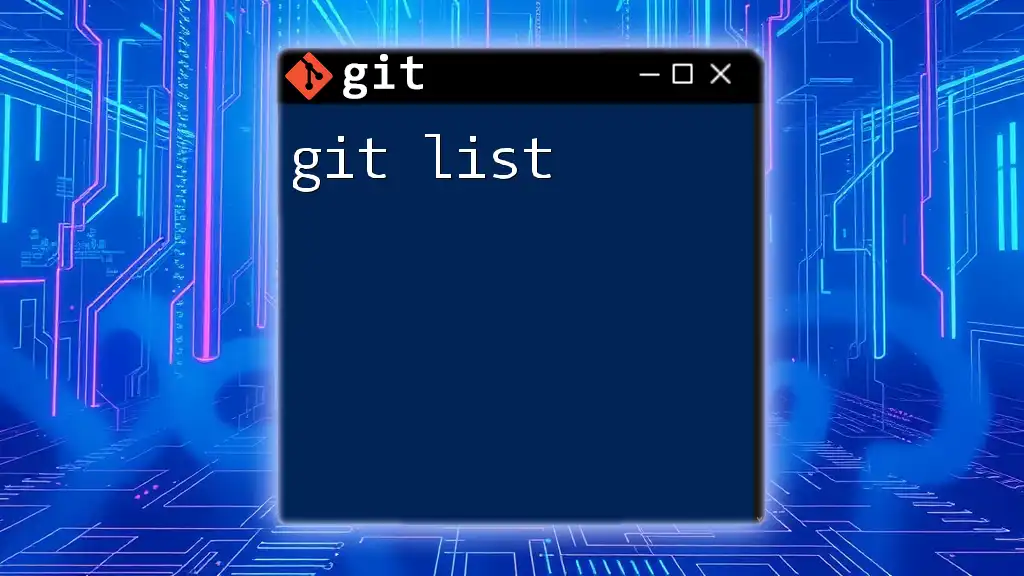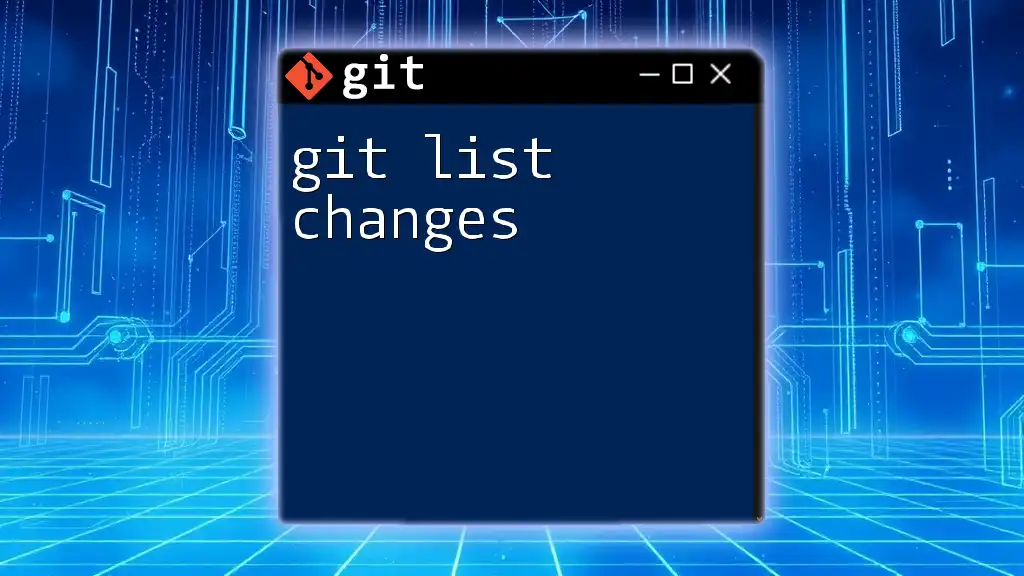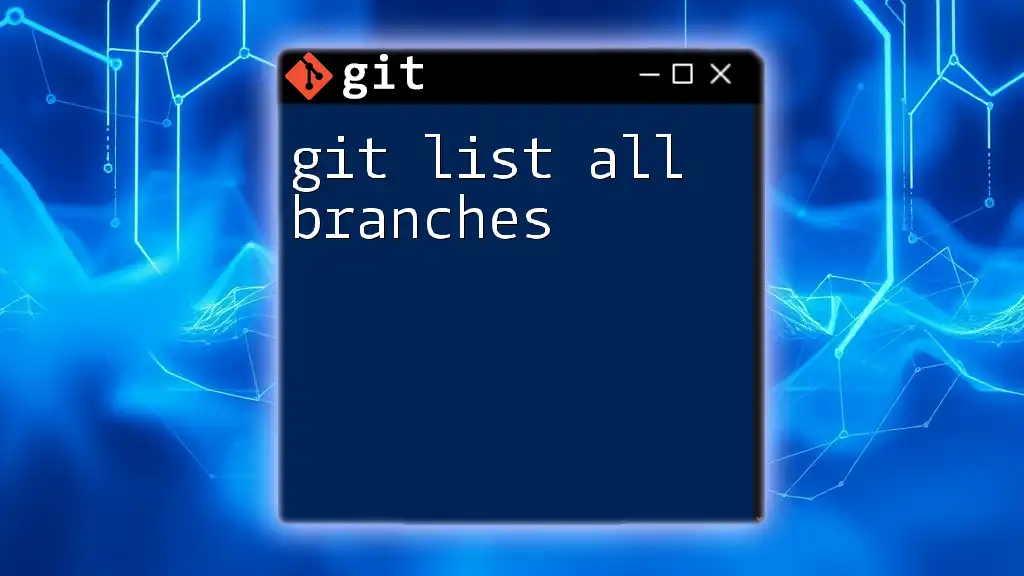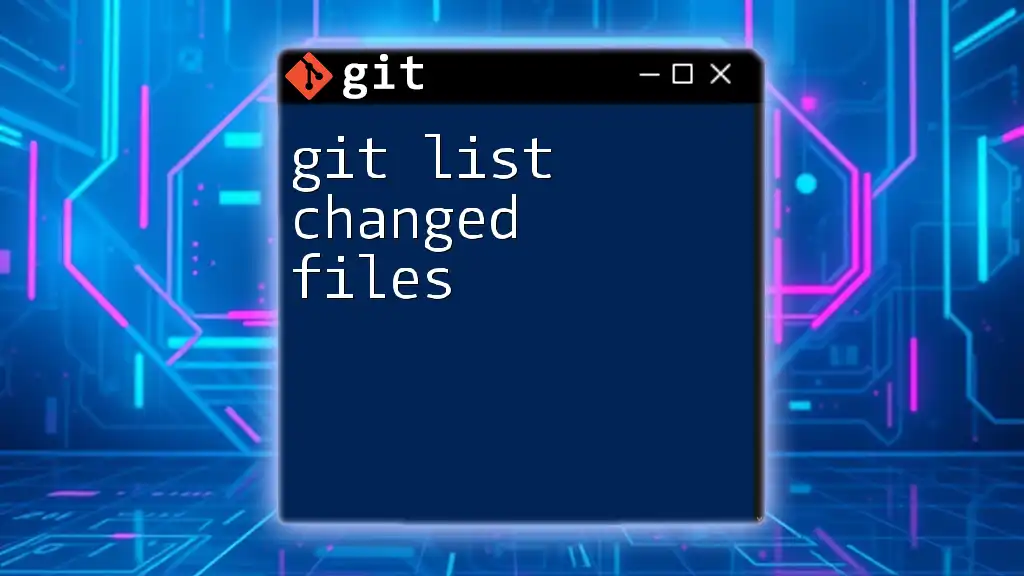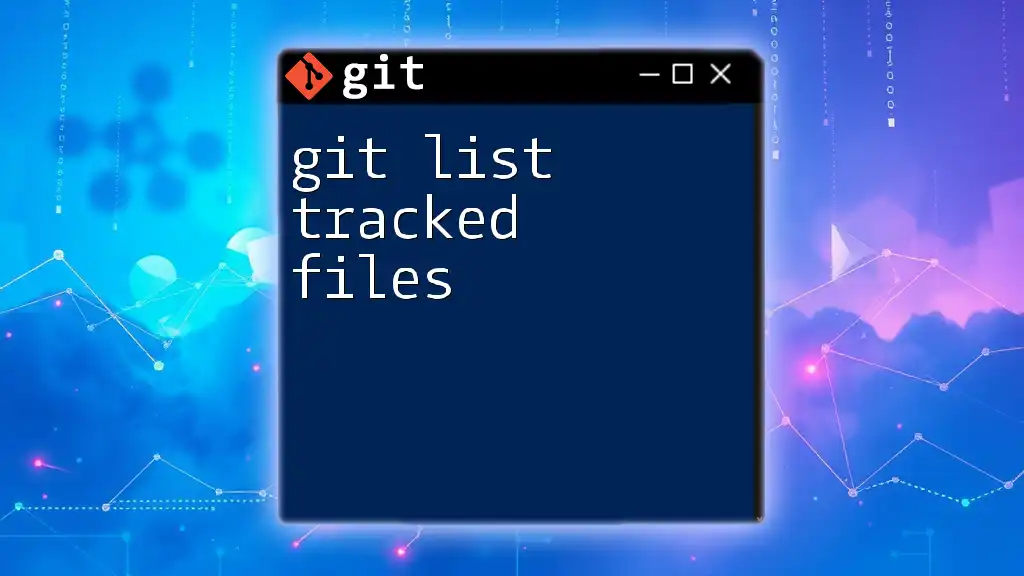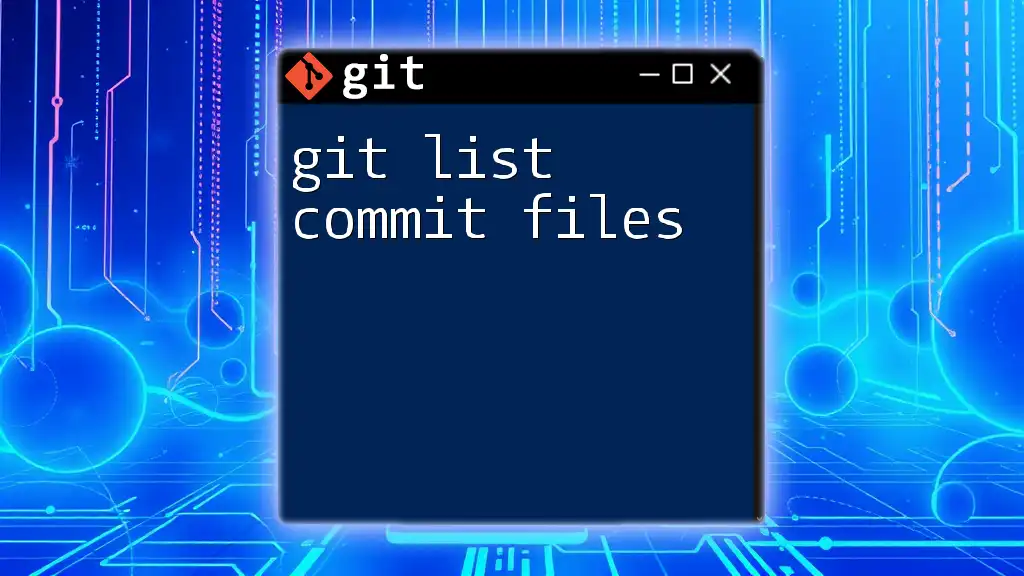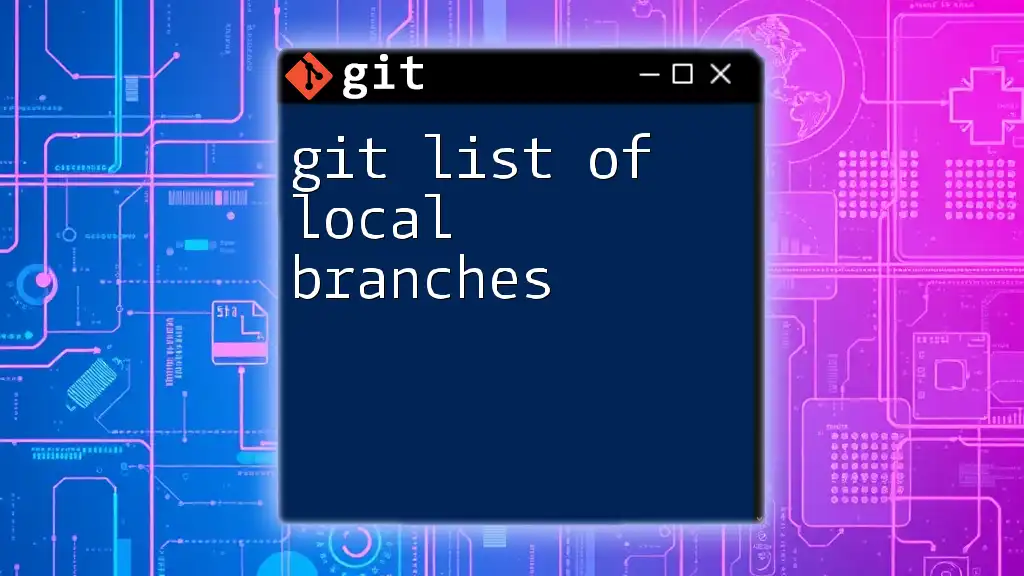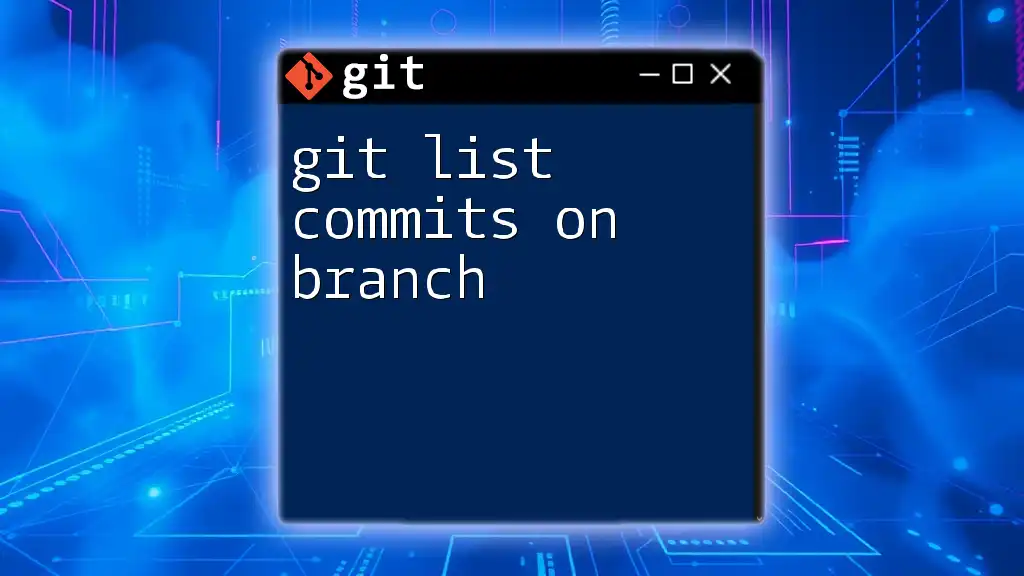The command to list all the local branches in a Git repository is `git branch`, which displays the branches and highlights the currently checked-out branch.
git branch
Understanding the Importance of Git Listing Commands
What is Git?
Git is a powerful version control system widely used in software development. It allows developers to track changes in their codebase, collaborate with others, and manage the entire lifecycle of a project. By enabling branching and merging, Git helps maintain a clear history of changes, making it an essential tool for both individual developers and teams.
Why Listing in Git Matters
Listing commands in Git enhance a developer's workflow by providing vital information about the state of the repository. These commands allow users to quickly view branches, tags, remotes, and commit histories, which are crucial for decision-making during development. For instance, before merging branches or pushing changes, checking the existing branches helps prevent potential conflicts and keeps the project organized.
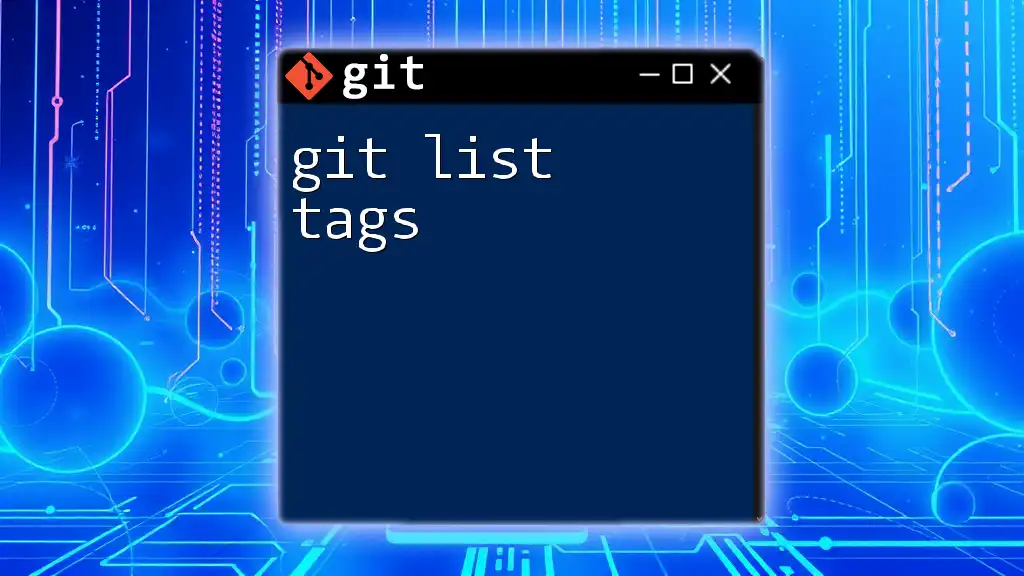
Git Listing Commands Overview
What are Git Listing Commands?
Git listing commands are specific instructions that allow users to view various aspects of their Git repository. Unlike other commands that alter the state of the repository, listing commands focus solely on displaying information. This distinction is key for maintaining clarity while navigating through repositories.
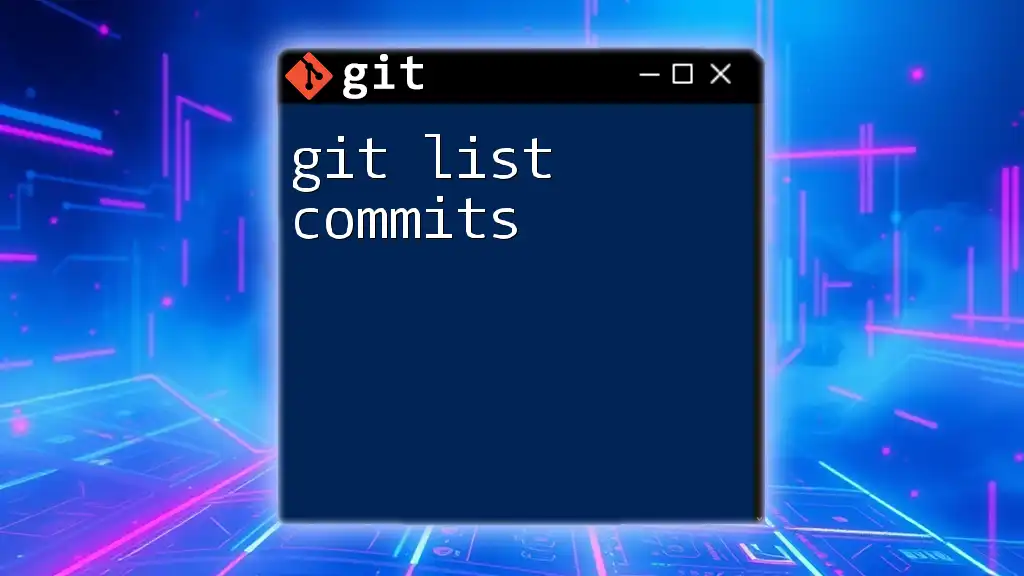
Key Git Listing Commands
git branch
The `git branch` command is a fundamental tool for listing all the branches in a repository. This enables you to determine where you are and which branches exist.
Syntax:
git branch
Example: When you run `git branch`, you might see output like the following:
* main
feature-1
feature-2
The `*` before "main" indicates that you are currently on this branch.
Explanation: Understanding how to read the output of `git branch` is crucial. This command not only tells you the local branches present in your repository but also helps you quickly identify your current working branch.
git tag
In project management, tagging is vital for marking specific points in history as important, typically used for releases.
Syntax:
git tag
Example: When you execute `git tag`, the output might look like this:
v1.0
v1.1
v2.0
Explanation: Each entry represents a tagged version of your project. Tags can be particularly meaningful as they convey significant milestones, allowing team members to quickly reference the state of the code at that point.
git remote
The `git remote` command is essential for working with multiple repositories. It allows you to view all remotes associated with your local repository.
Syntax:
git remote -v
Example: Upon running this command, you can expect output like:
origin https://github.com/user/repo.git (fetch)
origin https://github.com/user/repo.git (push)
Explanation: The output indicates the remote repository URLs. Understanding these URLs is crucial for managing where your local changes are sent or fetched from, particularly when collaborating with others.
git log
The `git log` command provides a detailed history of commits made in the repository.
Syntax:
git log
Example: The output might appear as follows:
commit 3f9c74ed8e528ef4a88d43d788c783f97617d7b2 (HEAD -> main)
Author: Your Name <youremail@example.com>
Date: Fri Sep 24 12:34:56 2023 -0400
Fix bug in feature-1
commit 1f61c8a101cdbeaf5b6c08d195d58201eac9374f (origin/main)
Author: Your Name <youremail@example.com>
Date: Thu Sep 23 10:20:30 2023 -0400
Add feature-1
Explanation: The `git log` command reveals the entire commit history, including commit hashes, authors, dates, and messages. This information is invaluable for understanding the evolution of the project and for troubleshooting issues.
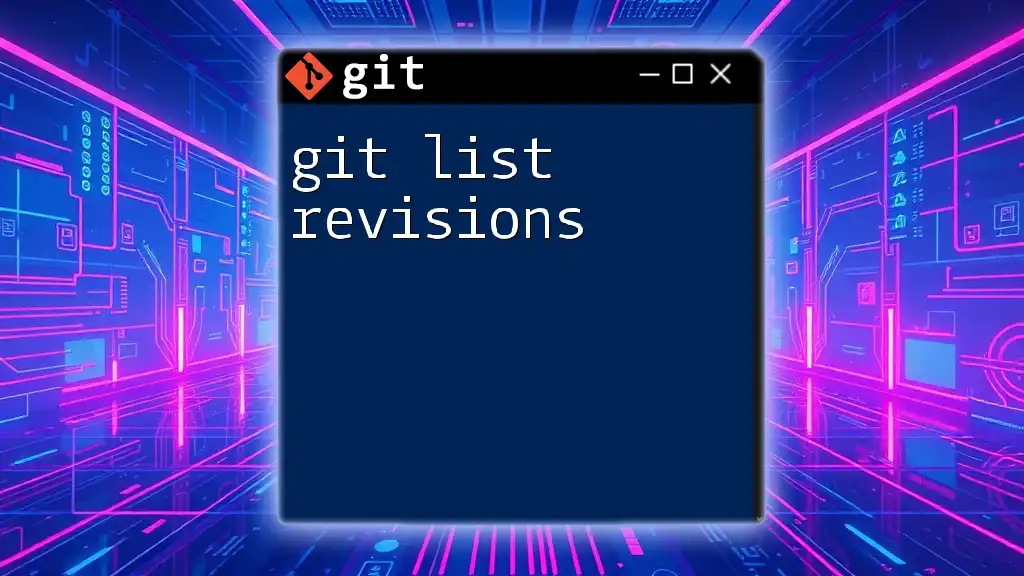
Advanced Git Listing Techniques
Using Flags with Listing Commands
Git provides various flags that enhance the functionality of listing commands. Flags allow users to customize their output according to their needs and streamline the workflow.
Examples:
- Running `git branch -a` allows you to view a comprehensive list of all branches, both local and remote.
- The command `git tag -l 'v*'` can be used to list only those tags that start with "v", helping you filter results effectively.
Combining Commands for Enhanced Productivity
For advanced users, combining commands can significantly improve efficiency.
Example: You can filter through your branches quickly with:
git branch | grep feature
This command lists only the branches that contain the string "feature," enabling targeted management of related branches.
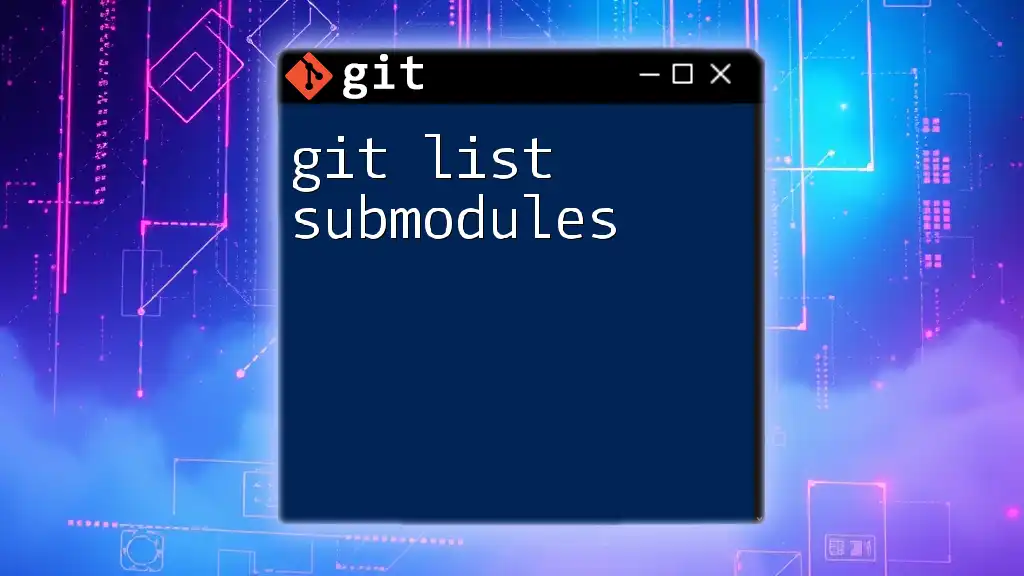
Best Practices for Using Git Listing Commands
Regularly Check Branches
It is a best practice to regularly check all branches before significant operations like merging or creating new features. By doing so, you can avoid unnecessary conflicts and maintain a clean project structure.
Keeping Tags Organized
Adopting a robust tagging strategy enhances the project's navigation. Use clear and consistent naming conventions for your tags, which makes it easier to understand the historical context of releases.
Monitoring Remote Changes
Regular checks on your remote repositories are crucial. By using the `git remote update` command before listing remotes, you ensure that your local view is in sync with any changes made remotely.
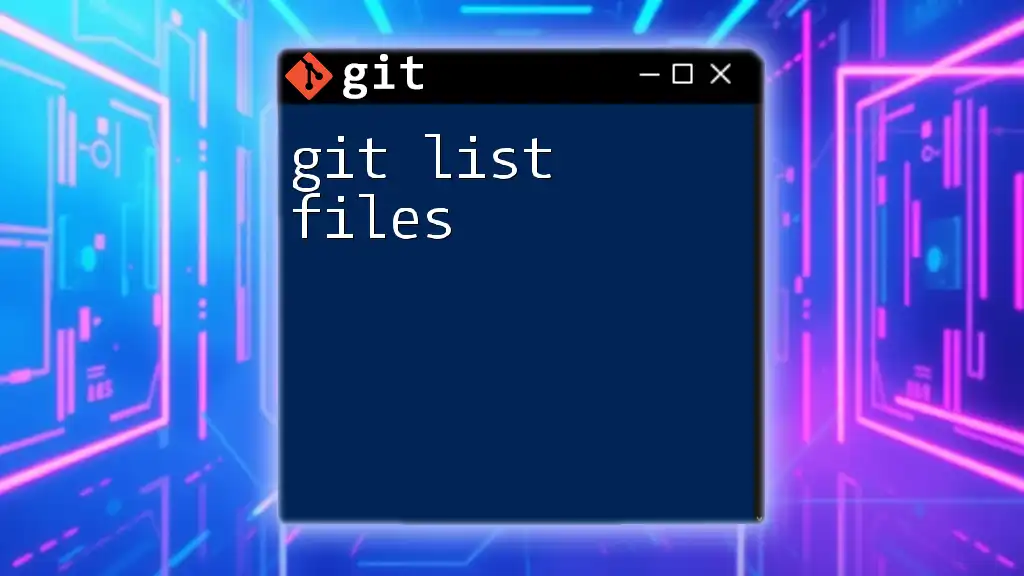
Conclusion
Summary of Key Points
In this guide, we’ve explored the essential Git listing commands, their syntax, and their significance in maintaining an efficient workflow. Whether you're managing branches, tracking tags, or keeping an eye on your commits, these commands are vital tools for any Git user.
Further Resources
For those interested in deepening their understanding, the [official Git documentation](https://git-scm.com/doc) is an invaluable resource, along with various books and online tutorials focused on Git best practices.
Call to Action
We encourage you to practice these commands in your Git repositories. Familiarizing yourself with the `git list` commands will empower your development skills and enhance your collaborative efforts within projects. Please share your experiences or any questions you may have about Git listing commands!

